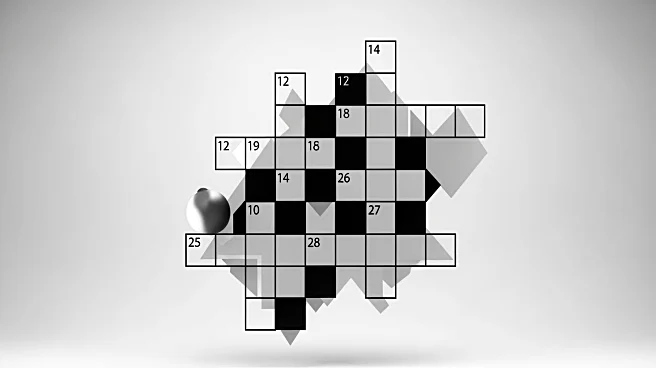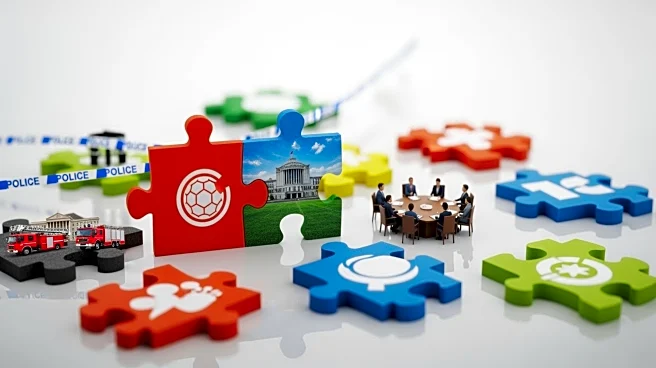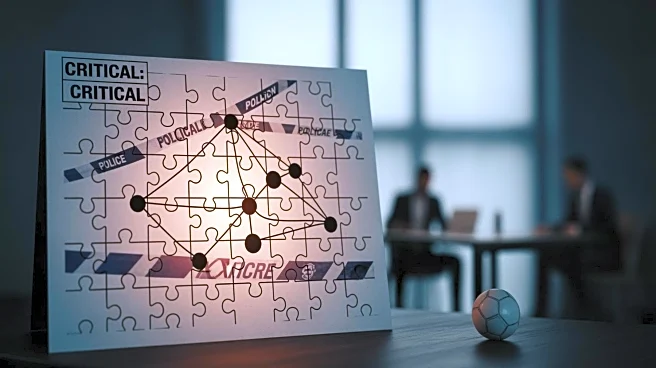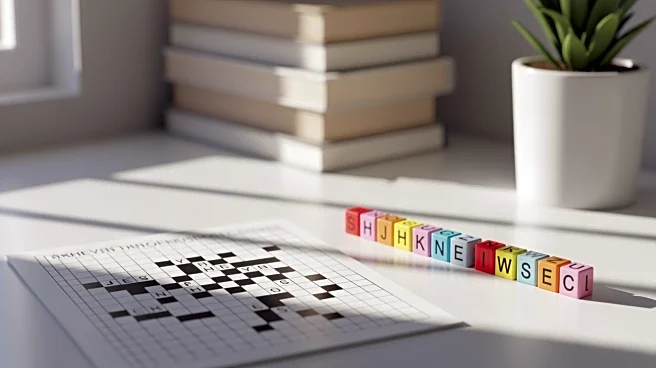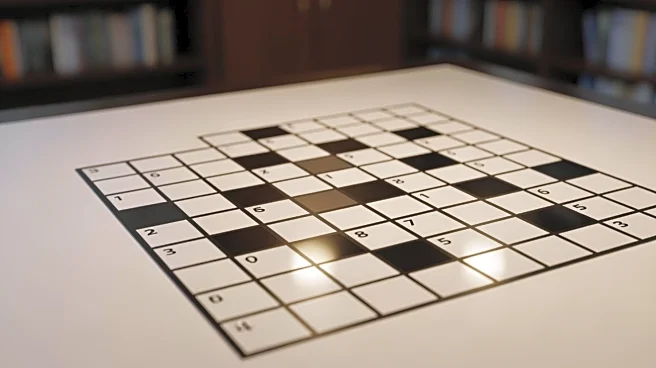What's Happening?
The New York Times has published a crossword puzzle designed by Daniel Grinberg, a user experience researcher from Philadelphia. This puzzle, noted for its tight and constrained theme, marks Grinberg's
tenth contribution to the Times. The puzzle features six circled squares that serve as the fulcrums of the puzzle's main trick, delivering a final flourish. The theme is not explicitly indicated in the clue set, challenging solvers to deduce the theme through the entries that pass through the circled squares and their respective clues. The puzzle's construction involved 19 different iterations and took a month to complete, showcasing Grinberg's dedication to creating an elegant and complex wordplay experience.
Why It's Important?
Crossword puzzles are a staple of intellectual entertainment, providing mental stimulation and a sense of accomplishment to solvers. The innovative design of this puzzle by Daniel Grinberg highlights the evolving nature of crossword construction, pushing boundaries and offering new challenges to enthusiasts. Such puzzles contribute to the cultural and intellectual landscape, encouraging critical thinking and problem-solving skills. The publication of this puzzle in a major outlet like The New York Times underscores the importance of creativity and innovation in traditional media formats, potentially inspiring other constructors to explore unique themes and techniques.
What's Next?
As crossword enthusiasts tackle this puzzle, feedback and discussions may arise regarding the complexity and elegance of the theme. This could lead to increased interest in Grinberg's future works and potentially influence other constructors to experiment with similar innovative designs. The reception of this puzzle might also encourage The New York Times to continue featuring puzzles that challenge conventional formats, fostering a community of solvers who appreciate intricate and thought-provoking wordplay.
Beyond the Headlines
The puzzle's design reflects broader trends in media consumption, where audiences seek engaging and intellectually stimulating content. The success of such puzzles can influence the crossword industry, encouraging publications to invest in creative and challenging content. Additionally, the puzzle's complexity may spark discussions on the role of puzzles in cognitive development and their potential use in educational settings to enhance problem-solving skills.
